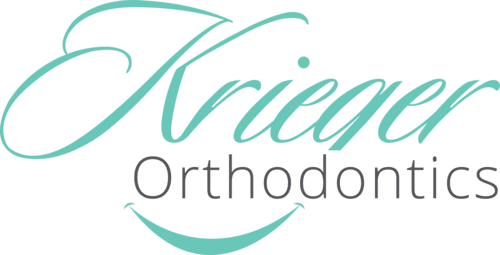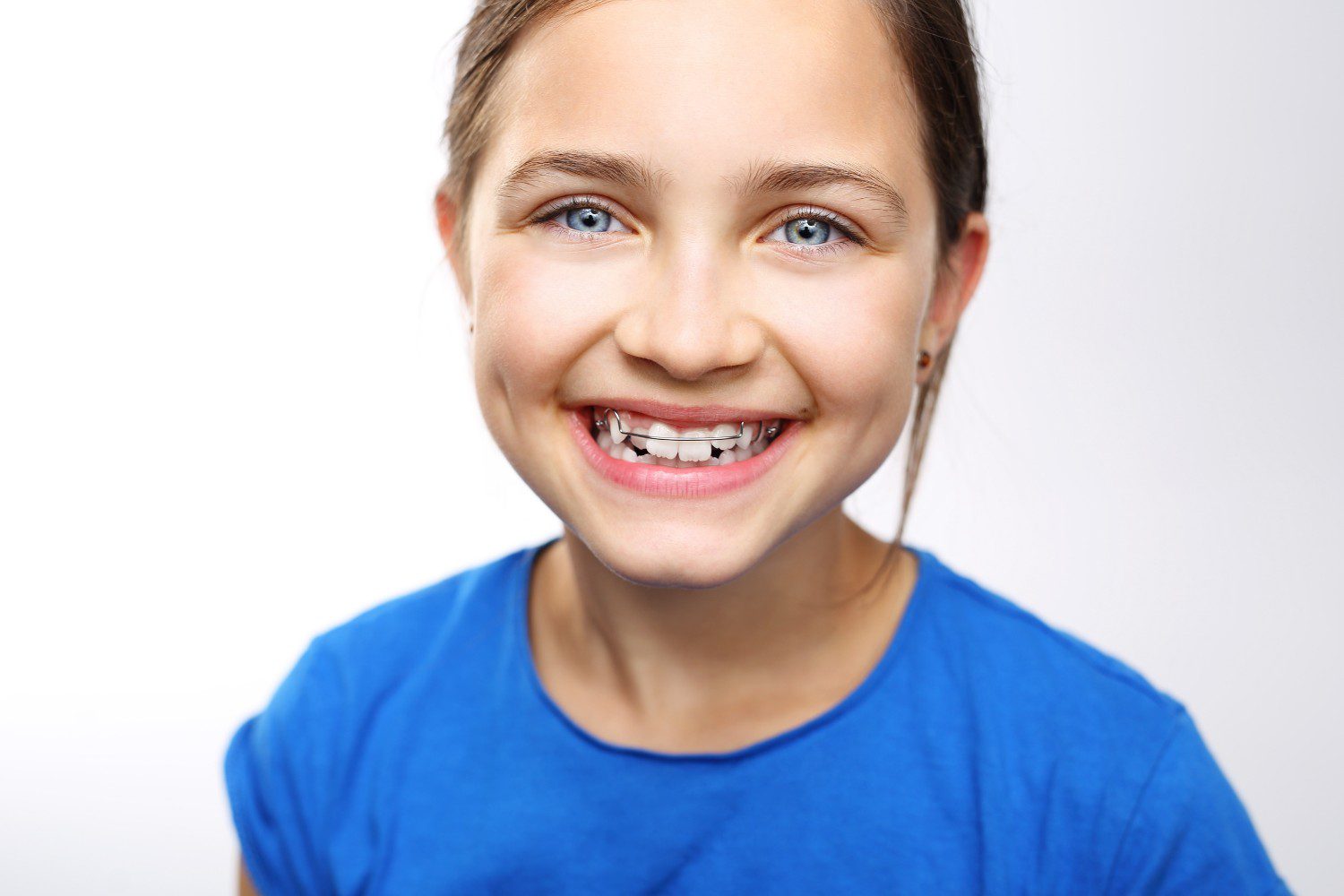As you near the end of your orthodontic treatment, whether you are waiting for your braces to come off or to pop in your last Invisalign aligner, you deserve to celebrate finishing the most difficult part of the process and show off the beautiful results. Here at Krieger Orthodontics, we know all the hard work, time, and dedication you have put into getting this far, and it can be tempting to think you are totally through with brackets, wires, or aligners forever! But before you get too carried away, remember that this is only the first step of orthodontic treatment. The second step begins soon after your teeth have been straightened, and it is every bit as important as the first is when it comes to maintaining your newly straightened smile.
The second phase of orthodontic treatment revolves around regular retainer use. This will round out the treatment process and is a critical component in keeping your teeth in their new and improved positions. If you have been a patient with Krieger Orthodontics for any time at all, you have no doubt heard us singing the praises of retainers, and frequently mentioning how important they are. Retainers can come in a permanent or removable version. To learn a little more about these two types of retainers, and why wearing the one Dr. Krieger gives you is so essential, keep reading.
A reminder about the importance of retainers
Retainers play an essential role in your orthodontic treatment, which is why we are such sticklers about them! There is a phenomenon known as “relapse” that occurs with the teeth, especially in the late teens and early twenties, where they have a natural tendency to drift back towards their original positions after orthodontic treatment has been completed. Retainers are the key to preventing this kind of relapse, holding your teeth in their new positions and keeping this natural drifting at bay.
Once treatment is complete, your teeth are not the only things we want to stay put in their new, preferred position. Teeth are not just fixtures in the jaw – each one is held in its socket by elastic ligaments that attach the roots to the bone. These ligaments are living tissues that are affected by the movement of the teeth, and this attachment is what allows for the small movements of the teeth during treatment.
When tension is placed in and around the teeth through braces, new ligaments, and sometimes even bone, are formed. Once the first phase of treatment, the remodeling phase, is complete, those tissues, ligaments, and bone will need time to stabilize. Without the help of a retainer to hold the new positions as they stabilize, the teeth will almost always migrate back to their old positions. Patients who do not follow through with wearing their retainer properly may eventually find their teeth shifting back to their old positions, undoing all the hard work of their orthodontic treatment.
A relapse like this is easily avoidable, however. Keeping your smile straight and your teeth in place is as simple as wearing your retainer as directed! Dr. Krieger will look at the specifics of your case, your preferences, your lifestyle, and your expected compliance before recommending one of these types of retainers for you.
The different types of retainers
In the same way that orthodontic appliances have both fixed (braces) and removable (Invisalign aligners) options available, there are fixed and removable retainers as well.
Fixed retainers
Fixed retainers will generally consist of a thin wire bonded behind the bottom or top teeth, or sometimes both. The wire stretches across several teeth, so dental care is similar to that of a braces patient, particularly when it comes to flossing. These can be a particularly helpful option for patients who have or have had, a large space between the two upper front teeth. After orthodontic treatment is finished, and space is completely closed, a fixed retainer can be used to keep the space closed. Because the bonded wire holds the newly straightened teeth in the ideal alignment over a long period of time, fixed retainers can have an excellent overall outcome, and you never have to remember to wear them!
Removable Retainers
There are a couple of different options when it comes to removable retainers, the Hawley and the Essix models. Both are designed to specifically fit your mouth following treatment. Our team will take an impression of your newly straightened teeth, then create a custom retainer with a clear plastic material (for an Essix retainer) or from wire and an acrylic material (for a Hawley retainer.)
Hawley retainers
The Hawley appliance is one of the oldest and most commonly used retainers and is probably the one you would be most likely to recognize. Made of stainless steel, these retainers are kept in place by a wire wrapping around your teeth combined with an acrylic arch that rests against the roof of your mouth. The metal wires can be adjusted to continue minor movement of the front teeth if needed. Though many orthodontists are moving away from this more traditional retainer, it is still useful in some cases.
Caring for your Hawley retainer
These appliances can be a bit fragile, so it is important to take good care of it. To properly care for your retainer, you should always:
- gently clean it daily to remove any bacteria and food debris
- keep it away from heat or hot water
- store it in its case when you are not wearing it
Gently clean your Hawley retainer once a day by using a soft-bristled toothbrush and toothpaste. You may also want to soak it in a denture cleaner a few times per week to freshen it up and kill any germs that may be hiding out in the grooves of the mold.
Essix retainers
Essix retainers may cover the entire arch of the teeth, or go from canine to canine, and each one is molded to the unique shape of your mouth. Made entirely of transparent plastic, these retainers look very similar to the clear aligners used with the Invisalign system and are less noticeable than traditional wire retainers.
Caring for your Essix retainer
An Essix retainer should last as long as you need it, provided you give it consistent care. To get the most out of it, you should always:
- rinse the retainer in cold water each time you take it out, and before you put it back in
- store the retainer in a plastic case whenever you are not wearing it
- brush the retainer after each meal, using a soft toothbrush with cool or lukewarm water
- never put the retainer in hot water, since the heat can shrink it
- wash the retainer with a specialized cleaner once every few months
Cleaning your teeth is easier with either of these retainers, but you will have to remember to wear them daily. These retainers are a lot easier to misplace or damage, so it is important to be mindful of where they are at all times and to be careful with them. In some special situations, it may be necessary for us to use both permanent and removable retainers together to ensure no relapses occur.
Keeping your smile on the straight and narrow with Krieger Orthodontics
Modern orthodontic wisdom now tells us that the most successful smiles will need to wear some type of retainer part-time for the rest of their life after the teeth have been straightened, but do not worry! With a little patience and practice, your retainer will quickly become just another part of your daily routine.
Here at Krieger Orthodontics, we are dedicated to finding exactly the right orthodontic treatment for you, your smile, and your lifestyle. This includes finding the type of retainer that will serve you best. If you have braces coming off soon, you are almost done with your Invisalign aligners, or you would just like more information on the importance of retainers, we are here for you. Our Lewisville office is staffed with the friendliest, most fun-loving team in Texas, and we would love to hear from you today!




